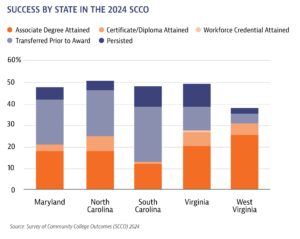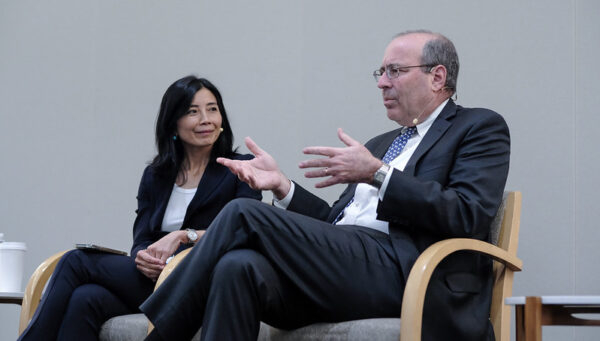Key Highlights
Challenges
Workforce development needs vary across communities. It’s not a one-size-fits-all problem. Accordingly, community colleges do not offer a one-size-fits-all solution. The traditional method for measuring success among higher education institutions, however, does not capture community colleges’ broad set of contributions. A student choosing where to study, a parent or guidance counselor advising a student, or a philanthropic or government institution deciding where to direct resources does not get a full picture of community college efficacy through the traditional success metric.
Opportunities
The Richmond Fed’s Survey of Community College Outcomes (SCCO) offers a more comprehensive measure of success by expanding both the assessed student population to include nontraditional students and the definition of success to include outcomes beyond graduation like transfers to four-year colleges. Using this approach, the SCCO found a 49% success rate among surveyed schools, which was 19 percentage points higher than their traditional success rate.

Findings and Next Steps
- The SCCO offers a more comprehensive picture of community colleges’ contributions to workforce development.
- The flexible nature of the success rate allows two community colleges to achieve similar success rates through different avenues.
- The SCCO can also help students, policymakers and philanthropists alike make more informed decisions about investing time and resources into community colleges.



